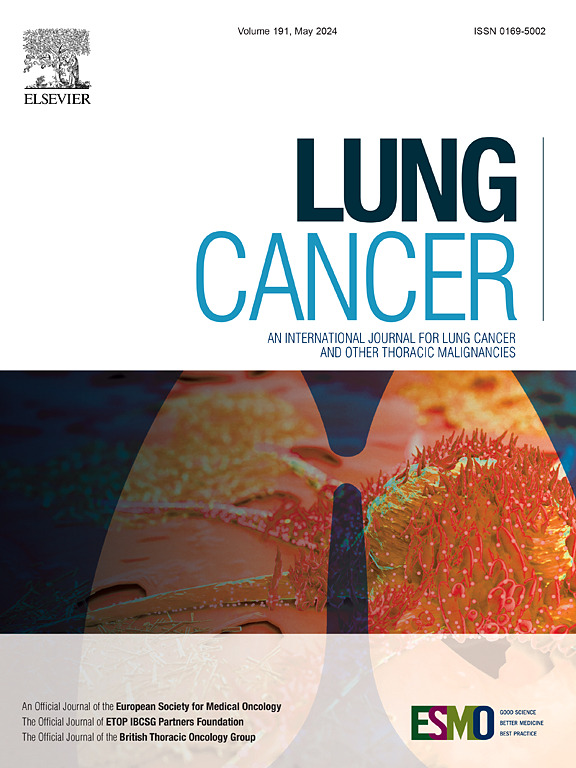Genomic profiling of aggressive pathologic features in lung adenocarcinoma
IF 4.5
2区 医学
Q1 ONCOLOGY
引用次数: 0
Abstract
Introduction
Pathologic features involving LVI (lympho-vascular invasion), PNI (perineural invasion), STAS (spread through air spaces), and Grade 3 pattern (from the International Association for the Study of Lung Cancer grading system) are related to having an aggressive phenotype and linked to poor prognosis. However, few studies have conducted in-depth analyses of these features simultaneously with genomic profiling.
Methods
A total of 1559 sequencing of adenocarcinoma samples were included in the common driver mutations analysis, 1306 samples were brought into genomic mapping analysis. OncoSG’s East Asian ancestry dataset was implemented for Tumor-Node-Metastasis-Biomarker (TNMB) classification and prognostic assessment.
Results
EGFR was more significantly prevalent in LVI negativity (P = 0.021), STAS negativity (P = 0.002), and moderate grade (P < 0.001). ALK was significantly interrelated with LVI (P = 0.028), STAS (P < 0.001), and poor grade (P < 0.001); ROS1 and STAS positivity (P = 0.031), poor grade (P = 0.016) were significantly related. KRAS (P = 0.003) and BRAF-V600E (P = 0.002) were only significantly intertwined with poor grade. Apart from common driver mutations, TP53, CHEK2, KEAP1, PTEN, RB1, NF1 were significantly enriched in LVI samples (P < 0.05). TP53, PTEN, CTNNB1, HGF, NF1 were more prominent in STAS (P < 0.01). TP53, LRP1B, NF1 were significantly more prevalent in Grade 3 pattern (P < 0.001). The mixture of STK11, PTEN, and TOP2A generated by exclusive mutations may be a potential predictor of TNMB categorization towards survival. The HR of stage II compared I of TNMB was 2.28 (95 % CI 1.36–3.86, P < 0.001), while stage III compared II was 1.95 (95 % CI 1.04–3.21, P = 0.031).
Conclusions
This analysis demonstrated the correlation of pathologic features with common driver mutations, key mutations and canonical oncogenic signaling pathways. The data highlighted the similarities and differences among these features horizontally, and provide new insights in TNMB classification and prognostic assessment.
求助全文
约1分钟内获得全文
求助全文
来源期刊

Lung Cancer
医学-呼吸系统
CiteScore
9.40
自引率
3.80%
发文量
407
审稿时长
25 days
期刊介绍:
Lung Cancer is an international publication covering the clinical, translational and basic science of malignancies of the lung and chest region.Original research articles, early reports, review articles, editorials and correspondence covering the prevention, epidemiology and etiology, basic biology, pathology, clinical assessment, surgery, chemotherapy, radiotherapy, combined treatment modalities, other treatment modalities and outcomes of lung cancer are welcome.
 求助内容:
求助内容: 应助结果提醒方式:
应助结果提醒方式:


